
This well outfitted German trench has a lighted Christmas tree and soldiers celebrating with music and sausages!
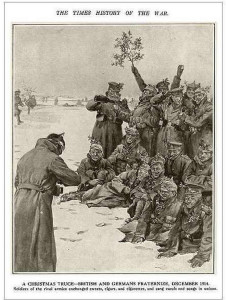
It’s true – there was a truce in parts of the line along the western front in 1914. The official diarist of the 3rd Battalion Rifle Brigade reported:
“Christmas in the trenches will always be remembered by the Battalion as a day of perfect peace during which by mutual consent both sides declared a truce. There were many interesting features on the Christmas day not the least of which was a German juggler who drew a large crowd of Riflemen and Germans in the middle of No Man’s Land.”
The battalion was then in Armentieres where they spent 34 days without being relieved.
There were many other examples along the front but the outbreak of peace was not universal and it was immediately condemned by military authorities who forbade any future such breaches of discipline.
A Regular Mothers Meeting
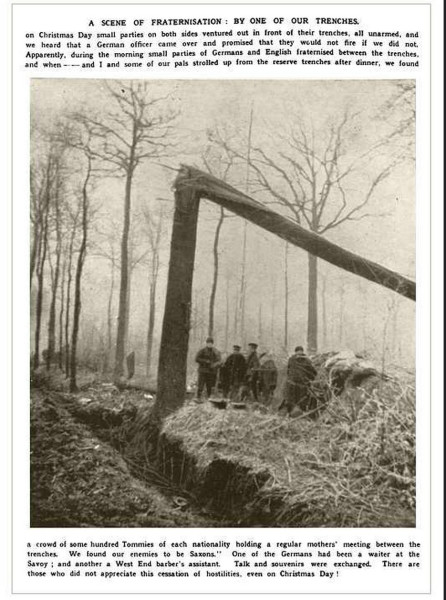
A Scene of Fraternization: By one of Our Trenches
“On Christmas Day small parties on both sides ventured out in front of their trenches, all unarmed, and we heard that a German soldier came over and promised that they would not fire if we did not.
Apparently, during the morning small parties of German and English fraternised between the trenches and when –and I and some of our pals strolled up from the reserve trench after dinner, we found a crowd of some hundred Tommies of each nationality holding a regular mothers meeting between the trenches.
One of the Germans had been a waiter at the Savoy; and another a West End barber’s assistant. Talk and souvenirs were exchanged. There are those that did not appreciate this cessation of hostilities even on Christmas Day!”
“They told us they were fed up, and wished the war was at an end, as we do ourselves.”
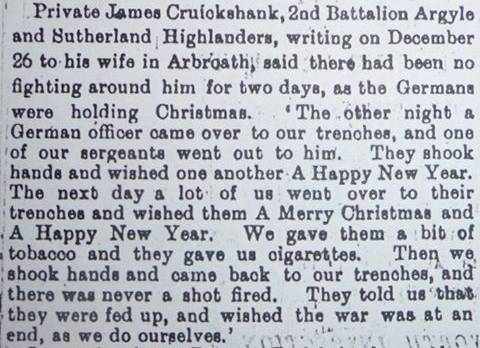
From the Arbroath Guide of January 1915. Private Cruickshank seems to have survived the war.
The war that was supposed to be over by Christmas showed no signs of slowing down.
And while the losses on both sides staggered the imagination the brutal bloodletting of autumn 1914 was but a prelude for the worse that was yet to come.
And in many parts of the line it was business as usual.
On Christmas Eve the diarist for the 2 Indian Cavalry Division: 20 Deccan Horse prepared casualty lists and reported a hard frost. On 25th Xmas Day: “Hearing from the GOC that the disputed area had been finally won by us arranged … to motor out to see if any search can be made and casualties recovered. Issued Their majesties Xmas cards to all ranks.”

At La Clytte in Flanders the diarist for 3 Division: 30 Brigade Royal Field Artillery reported: “No shooting all day owing to fog.”
Lt. Col W. Westropp-White of the Indian Medical Service was the official diarist for the 7 Indian (Meerut) Division: 128 Indian Field Ambulance. He wrote:
“Mesplaux 24-12-14: 82 were evacuated to the clearing hospital …including Lieut. R.R. Lewin Royal Sussex Regt.who was brought in at 3.30 pm suffering from syncope and collapse the result of exposure …. Many cases of frostbite with swollen and tender feet.”
“25-12-14 32 admitted to hospital, 21 one of which were British, mostly from the Guards who had taken over the trenches. Lieutenant L.C. Campbell Rogers 1/9 Gurkhas was brought in severely wounded at 3pm but died at 5pm.”
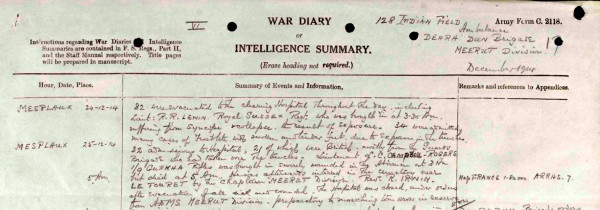
Rex Richard Lewin survived that collapse and rose to the rank of Captain before dying nine months later on the first day of the Battle of Loos. He was 21.
“He died a most magnificent death”
Lt. Leonard Castel Campbell Rogers was mentioned in dispatches and awarded the Military Cross.
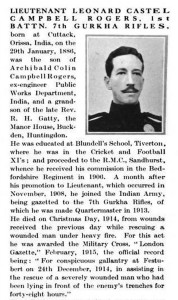
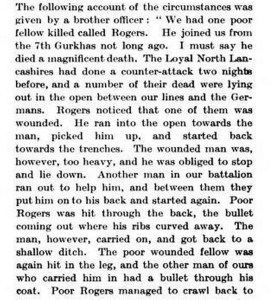
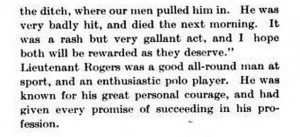
Lt. Rogers was one of 149 British Empire and Commonwealth dead on Christmas day 1914. He was 28.
The youngest – Private Henry George Dolphin age 15 of the 2nd Battalion Welsh Regiment – was buried in the same cemetery at Le Touret. You can read much more about Henry Dolphin – who he was and how he came to enlist so young – here. The account includes these details:
- The 2nd Battalion of the Welsh Regiment went to France with the BEF on the 13th of August 1914, landing at Le Havre. They saw considerable action, first at Mons and the subsequent retreat, including the rearguard action at Etreux, followed by the battles of the Marne and the Aisne (including participation in the actions on the Aisne Heights and at Chivy) and at First Ypres.
- Henry joined the 2nd Battalion with a draft of 500 other replacements having just completed his basic training.
- By the end of First Ypres battle, the two sides were deadlocked in siege warfare around the town of Ypres. The trenches were a mere collection of shallow ditches, poorly protected and exposed to shell and sniper fire from both the front and rear.
- During this period the troops spent most of their time shoring up their defences and improvising new weapon systems. They were under constant shellfire and subject to frequent trench raids as each side attempted to consolidate its line. There were constant patrols in no man’s land and frequent raids to capture prisoners or eliminate enemy firing positions.
- On the 20th December the Battalion moved to Bethune and at 15.00 hours on the next day attacked the German front line to the east of Festubert under the cover of supporting artillery fire.
- There was no informal truce in Henry’s sector on Christmas day and he was sent with a party of 70 men under Lt. Holdingsworth to secure a position in the enemy’s communication trench by the bend in the road to the west of Lone Tree.
- They came under heavy fire when crossing 300 yards of open ground, losing 4 men killed while Lt Holdingsworth himself was wounded.
- Henry was among those killed while crossing the open ground, having only been in France less than a month. His body was never recovered.
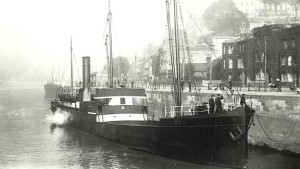
The oldest was Duncan McInnes, 64, an engineer of the Mercantile Marine from Paisley one of ten who died when the SS Gem, a cargo boat with a crew of 12, hit a German mine off the Yorkshire coast.
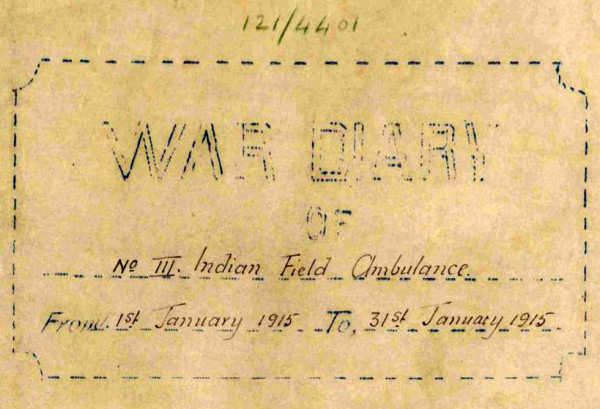
It was a busy season for the 3 Indian (Lahore) Division: No.III Indian Field Ambulance outside Ypres.
Its war diarist relates the heroics of bearers, medical assistants and surgeons and the tide of wounded and sick.
It was a white Christmas and frosty. But the sick and wounded and dying kept coming in.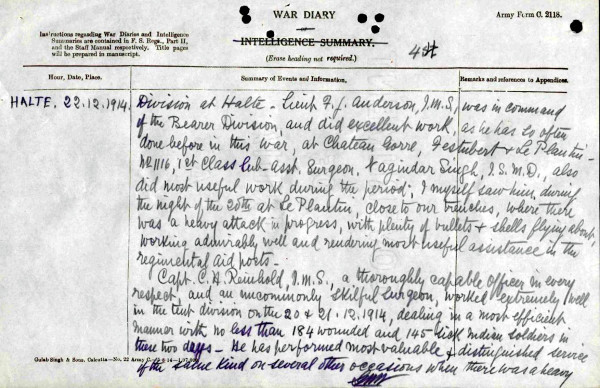
“…did most useful work; I myself saw him during the night…close to our trenches, where there was a heavy attack in progress, with plenty of bullets and shells flying about, working admirably well and rendering most useful assistance in the regimental aid posts.”
“…an uncommonly skillful surgeon”
“…he administered surgical aid most ably to 235 wounded in ten days with very poor accommodation”
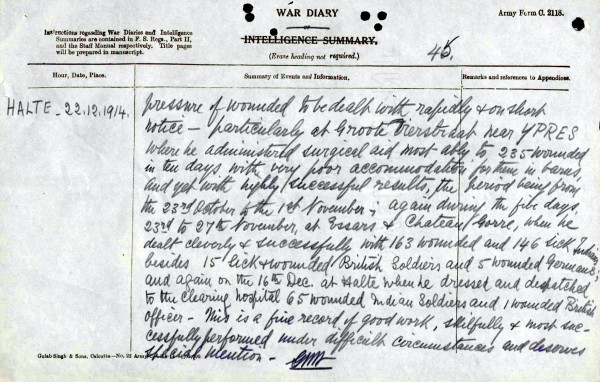
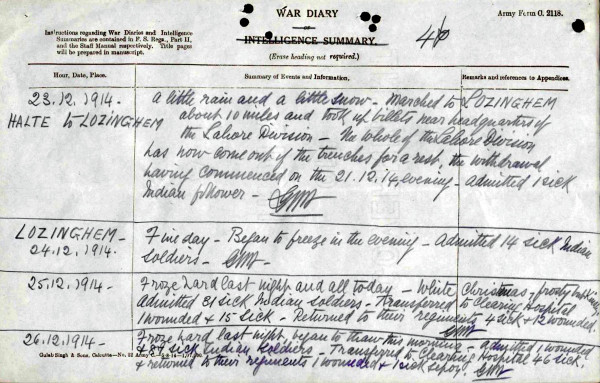
“Frost hard last night and all today – White Christmas and frosty….Admitted 31 sick Indian soldiers- Transferred to clearing hospital 1 wounded and 15 sick- Returned to their regiments 4 sick and 12 wounded.”
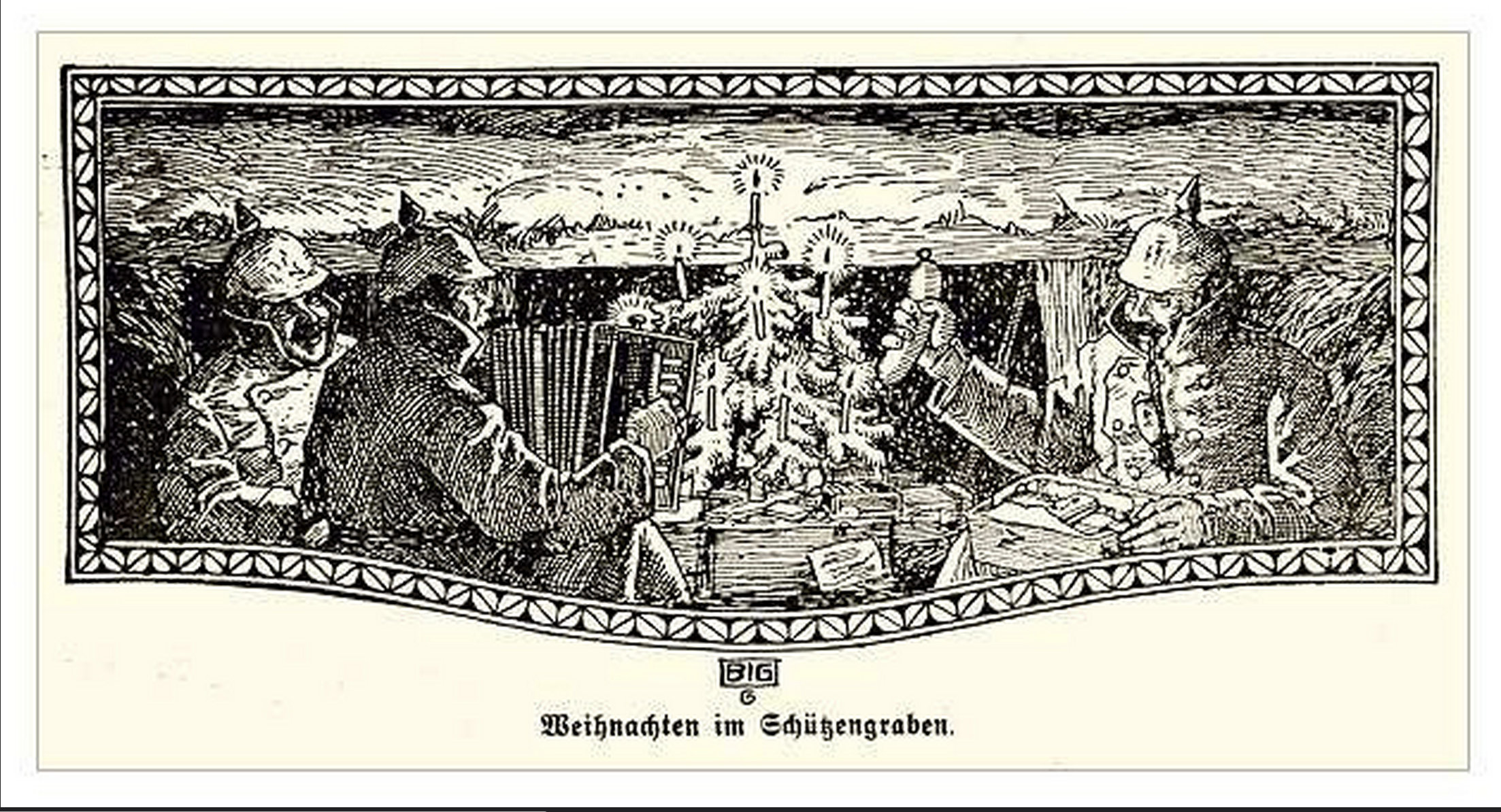


2 thoughts on “The Christmas Truce: “A Day of Perfect Peace””